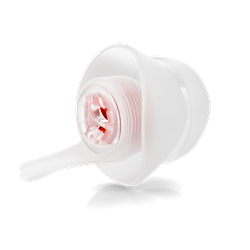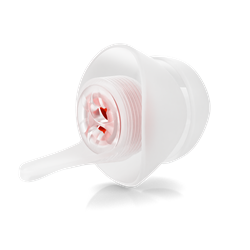
EarPeace is the original high-fidelity earplug that reduces harmful decibel levels while elevating the sound and comfort experience with crystal clear, safe sound.
“The patented design creates a unique seal with the application of minimal pressure to the inside of the ear. The filter technology then delivers a superb sound experience.” Jay Clark, Founder and CEO of EarPeace
WASHINGTON (PRWEB)
January 20, 2022
Today, EarPeace announced they were granted their second patent for the proprietary design of their earplugs following their utility patent, granted in May of 2021. Reinventing hearing protection in 2008, EarPeace created the original high-fidelity earplug that reduces harmful decibel levels while elevating the sound and comfort experience with crystal clear, safe sound.
Known as EarPeace PRO, the patented design of the Contour Earplugs™ conforms to the natural shape of the ear canal, delivering an industry leading level of comfort.. The finely tuned acoustic mesh filter precisely replicates the sound signature, to deliver superb audio at a safe volume for discerning artists and music fans.
“I designed PRO to sound so clear and feel so comfortable, the user forgets they are wearing them. If it isn’t an excellent experience, it’s useless. Full stop,” said Jay Clark, Founder and CEO of EarPeace. “The patented design creates a unique seal with the application of minimal pressure to the inside of the ear. The filter technology then delivers a superb sound experience. It’s as close to custom-molded earplug performance as you can get with universal fit hearing protection.”
Following the EarPeace Original design, the newly patented PRO resolves a common problem in traditional earplugs that contain rigid components by eliminating the mismatch between the shape of the ear and plug. The earplugs use less material to optimally expand in the ear canal, minimizing unwanted bunching and slit leaks. In addition to the higher level of comfort, the oval, offset wave shape of their patented design permits the filters – consisting of a finely tuned acoustic mesh and membrane that precisely replicate the sound signature – to perform at peak capacity.
According to the Centers for Disease Control and Prevention (CDC), in less than five minutes at a rock concert, noise induced hearing loss has already begun. In the past year, roughly 25 million Americans have experienced tinnitus. As a result, hearing loss remains the third most common chronic physical condition in the United States and is twice as prevalent as diabetes or cancer.*
On a mission to save the world’s hearing and prevent Noise Induced Hearing Loss (NIHL), EarPeace hasn’t stopped at revolutionizing hearing protection options – they continue to lead the change in how people value their hearing health as well as efforts to reduce the epidemic of hearing loss and tinnitus. EarPeace is trusted by NPR, Metallica, RedBull, Lollapalooza, and more.
For more information on the EarPeace, please visit: https://www.earpeace.com.
About EarPeace:
EarPeace reinvented hearing protection in 2008 with a discreet, comfortable, high-fidelity earplug built not only for musicians, but for all the fans at the event. This same technology was customized for motorsports, travel, anyone that needs a safety product, and for anyone that needs a good night’s sleep. The innovation by EarPeace continues today with new patents, products, technologies, and accessories designed to “enhance your experience.” Festivals, motorcycle rallies, and events all over the world depend on EarPeace to keep their stars and fans safe, comfortable, and ready for the next event. EarPeace’s promise is simple – you will hear and feel better when you wear EarPeace. For more information, visit: https://www.earpeace.com.
*Based on calculations performed by NIDCD Epidemiology and Statistics Program staff: (1) tinnitus prevalence was obtained from the 2008 National Health Interview Survey (NHIS); (2) the estimated number of American adults reporting tinnitus was calculated by multiplying the prevalence of tinnitus by the 2013 U.S. Census population estimate for the number of adults (18+ years of age)(Blackwell DL, Lucas JW, Clarke TC. Summary health statistics for US adults: National Health Interview Survey, 2012. Vital Health Stat 10. 2014;260:1-161.)
Share article on social media or email:

